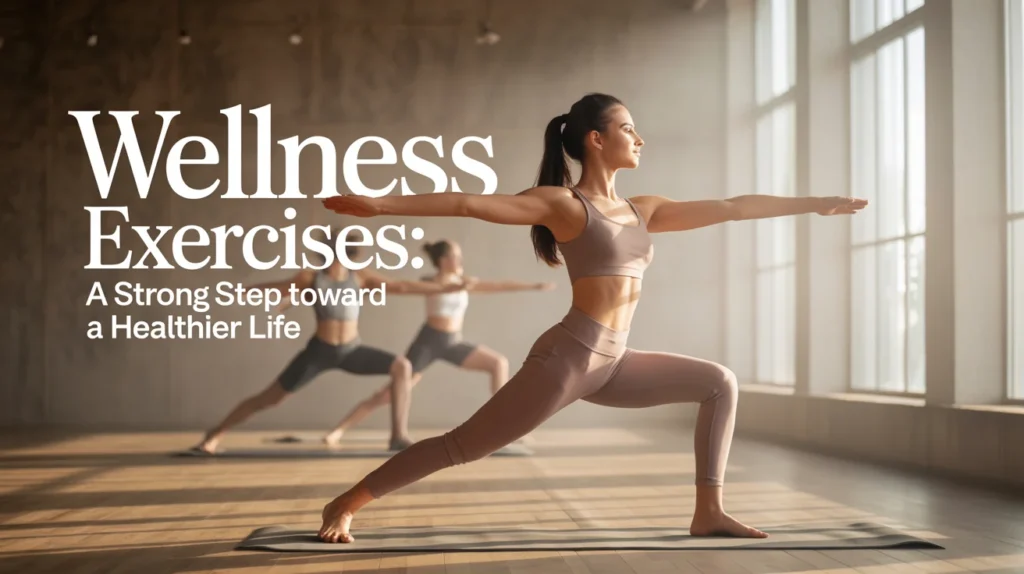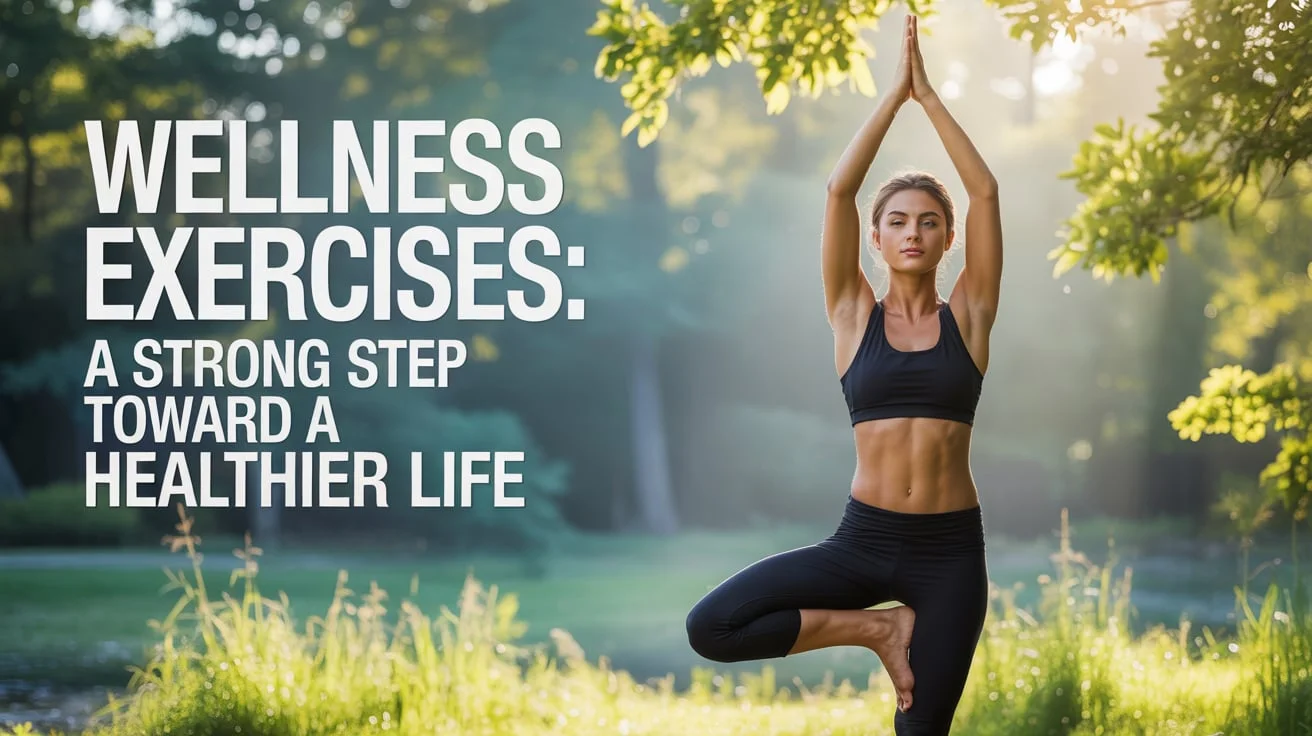Wellness Exercises: A Strong Step Toward a Healthier Life
Wellness exercises are more than just physical movements; they are a complete approach to balancing body, mind, and energy. These gentle yet effective routines help reduce stress, improve flexibility, and enhance mental clarity. They can be done by anyone, anywhere, without special equipment.
In today’s fast-moving lifestyle, people are looking for ways to feel better naturally. Wellness activities offer simple habits that support long-term health without the pressure of intense workouts. They focus on building strength, peace, and daily resilience through mindful movement.
The Foundation of Everyday Movement
Small movements have a big impact on overall health. Engaging in daily activities, such as walking or gentle stretching, can improve blood flow and reduce stress. Wellness exercises offer a gentle yet effective way to stay active.
Remaining in one position for long periods reduces mobility. Gentle motion wakes up tight muscles and protects joint health. These exercises act as daily shields for your body’s well-being.
Everyday Movement Examples
- Take a brisk 10-minute walk after meals.
- Stretch arms and spine every two hours
- Do neck rolls to ease desk tension
Mind and Body: A Balanced Connection
True wellness starts when your body and mind work in sync. Practices such as yoga, tai chi, and mindful breathing combine physical movement with mental stillness. These aren’t just ancient traditions; they’re proven methods to reduce stress and calm the nervous system.
When breath and motion are linked, the mind becomes clearer, and focus improves. With regular practice, people often feel more emotionally balanced, less anxious, and better able to concentrate. In a world full of distractions, this kind of balance is more valuable than ever.
Warm-Up Routines and Core Development
Before you dive into any wellness activity, warming up is essential a well-structured warm-up preps your body by increasing blood flow and reducing stiffness. Simple actions, such as shoulder rolls, leg swings, and gentle torso twists, activate muscles and joints without overexertion. Just five minutes can make your workout safer and more effective.
Core strength is another essential aspect of wellness. It goes beyond visible abs; your core supports your spine, posture, and balance. Strengthening it through exercises like planks, bridges, or controlled leg lifts enhances stability and helps prevent injury.
These simple yet vital movements form the base of your strength. As you progress, you can slowly increase repetitions and duration. The focus remains on control, breath, and posture rather than speed or intensity.
Flexibility, Balance, and Progression

Flexibility and balance are often overlooked, yet they play a vital role in your overall wellness. Flexible muscles reduce the risk of injury, improve posture, and support fluid movement. A brief daily stretching session can help release tension and improve your range of motion.
Balance exercises, on the other hand, train your brain and body to work together. They improve coordination and strengthen stabilizer muscles that support everyday activities. As you age, these skills become even more essential for safety and independence.
Key Flexibility & Balance Tips:
- Hold each stretch for at least 20 seconds
- Engage your core during balance drills.
- Use a chair or wall if needed for support.
Recovery, Rest, and Routine Building
Just as exercise is a key pillar of wellness, recovery is also a crucial component. Your body repairs and grows stronger when you rest. Sleep, hydration, and light activities, such as foam rolling or walking, are great ways to support recovery. Ignoring rest leads to fatigue, mental fog, and even injury.
Creating a simple wellness routine helps you stay consistent and committed. Try starting with just 15 minutes a day and gradually build from there. Morning stretches, lunchtime walks, or evening breathing exercises are all effective ways to stay active without overwhelming.
Tracking your progress helps with motivation. When you record how you feel before and after each session, you begin to see patterns. This empowers you to adjust your routine based on what your body truly needs.
Long-Term Wellness Benefits
Wellness exercises aren’t a quick fix; they’re a lifestyle investment. Over time, they reduce the risk of chronic diseases, sharpen cognitive function, and enhance daily energy levels. They also support better sleep and emotional regulation.
A consistent wellness practice supports every area of your life. Whether you’re a student, working professional, or retiree, these exercises will keep you moving, thinking, and feeling your best.
Long-Term Wellness Gains Include:
- Reduced anxiety and depression
- Stronger bones and joints
- Improved sleep quality
- Boosted immune function
Sample Weekly Routine
Creating a balanced weekly wellness routine is a simple and effective way to improve your overall well-being. Just a few minutes of movement daily can boost energy, reduce stress, and support long-term health. Repeating a thoughtful schedule builds consistency and motivation over time.
Suggested Weekly Plan:
- Monday: Warm-up and light stretching
- Tuesday: Core strength and breathing exercises
- Wednesday: Balance-focused workout
- Thursday: Rest and gentle reflection
- Friday: Strength and flexibility mix
- Saturday: Yoga session or tai chi
- Sunday: Nature walk or complete rest
Conclusion
Wellness exercises are not about pushing harder; they’re about moving smarter. With the right mindset and consistent practice, you’ll begin to notice lasting changes in your health, energy, and mental clarity. Whether you’re aiming to reduce stress, stay fit, or simply live with more ease, these exercises create a balanced path forward.
Start small, listen to your body, and enjoy the journey. Wellness is not a destination; it’s a lifelong process, and every step you take brings you closer to a healthier, more peaceful you.
Frequently Asked Questions:
1. What are wellness exercises?
They are gentle movements designed to enhance physical and mental well-being, including stretching, breathing exercises, and balance routines.
2. Can I do wellness activities at home?
Yes, most wellness activities require no equipment and can be done in your living room or even at your desk.
3. How often should I practice them?
Aim for 3 to 5 sessions per week, with each lasting 15 to 30 minutes for consistent results.
4. Are wellness activities suitable for beginners?
Absolutely. They are low-impact, easy to follow, and can be modified for all fitness levels.
5. Do I need to warm up before wellness routines?
Yes, a short warm-up helps prepare your muscles and reduces the risk of strain or injury.


